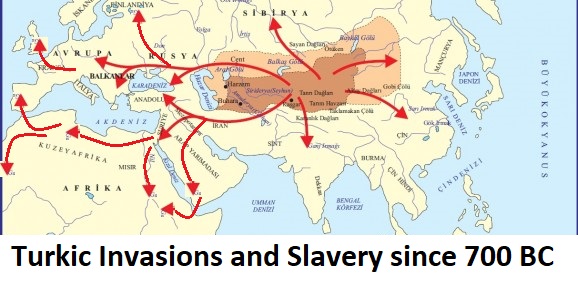I have created a map showing the distribution of East & North Asian (Mongoloid) mtDNA haplogroups in Europe and the Middle East. This includes haplogroups A, B, C, D, E, F, G, M7, M8, Y and Z.

ANALYSIS:
Western Europe
Western Europe has the lowest percentage of East Asian haplogroups, with an average of 0.3%. No country has 0%, but the current data shows that Basques and Cantabrians have 0%. It is not surprising that Western Europeans should have less North/East Asian mtDNA than Central or East Europeans since they are geographically furthest from Asia. R1b men came from the Middle East before becoming Indo-European speakers in the Pontic Steppe and invading Europe. This isn't the case of R1a people who already had some Mongoloid mtDNA (and physical feature based on archaeology) in the Pontic-Caspian Steppe at least since the Neolithic, but more probably since the Palaeolithic.
What piqued my interest is the slightly elevated percentage of East Asian lineages in Catalonia, Vendée and Cornwall. These regions were already special within Western Europe for having fairly high levels of U4, a lineage with strong affinities with Eastern Europe and the Volga-Ural region. Catalonia also has a lot of hg U5, V and W, all very common in Northeast Europe. The Asian haplogroups differ between these three regions though. Catalonia possess hg A and C, Vendée hg B and F, while Cornwall has only hg F. Haplogroup F has also been found at relatively high frequency (8.3%) on the island of Hvar in Croatia, a known hotspot for Y-haplogroup Q (6.1%). MtDNA F is found almost exclusively in East Asia, and to a lower extent to places settled by the Mongols. The association with Q in Hvar is surely a sign that some Huns or Mongols settled on this island. It is less clear how it ended up in Cornwall and Western France.
Haplogroup B has been found in the Rhône valley of France, a region also known for being a hotspot of Y-haplogroup Q with possible Hunnic connection.
Haplogroups D and G have been found in Austria.
Boattini et al. (2013) found in total 2.4% of hg A, C, D and M in Sicily. However the study by Brisighelli et al. didn't find any of these. It is difficult to guess how these Asian lineages ended up in Sicily, since there is hardly any East Asian mtDNA in Italy, Greece or North Africa.
Northeast Europe
In Fennoscandia, Asian mtDNA peaks among the Finnish Saami (up to 15%). The Saami carry mostly
haplogroups D5 and Z.
Slavic populations carry mostly
haplogroup C, a lineage already found in Neolithic Ukraine and Hungary, and therefore represents some of the oldest Mongoloid admixture among Europeans. I have hypothesised that mtDNA C (alongside U and X) was one of the original lineages of Y-haplogroups P, Q and R when these haplogroups appear in Central or North Asia around the Last Glacial Maximum.
Russia obviously has the greatest diversity of North/East Asian mtDNA. Haplogroups A, C, D, G2a and Z have all been found among European Russians. Interestingly I haven't found any study mentioning haplogroups B and F in Russia yet.
The detailed study on Belarus by Kushniarevich et al. 2013 found haplogroups C*, C5, D4b1, G and M10a1 among the Asian lineages.
Middle East and Caucasus
Altaic people such as the Turks and Kurds possess mostly mtDNA B, C and G.
The picture is far more complex in the Caucasus and Caspian region. The Kalmyks and Nogays are the most Asian ethnicity in the region and possess all the major North/East Asian haplogroups except E, which seem to be absent from Europe and the Middle East altogether. The Nogays also seem to lack hg Y.
Haplogroup A, B, F and Z are quite rare in the Caucasus. The most common Mongoloid lineages are C (peaking among the Abkhazians, Cherkessians and Kabardin) and D (found in all Caucasian populations except the Armenians, Avars, Dargins, Andis, Bagvalals and Chamalals). Haplogroup G is found mostly in the Northwest Caucasus and among the Kumyks and Nogays.


















